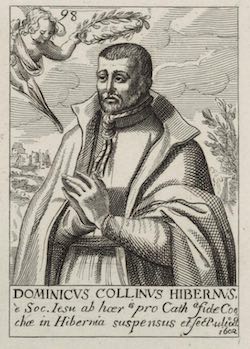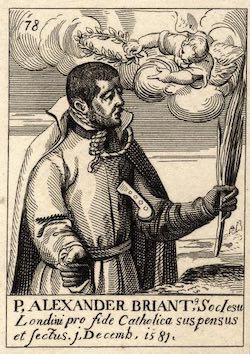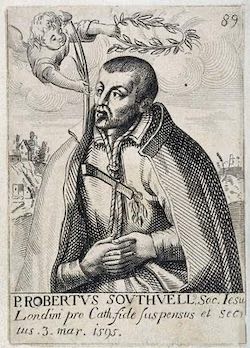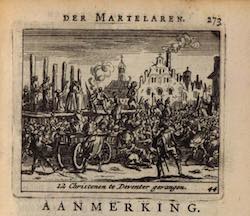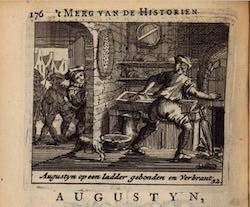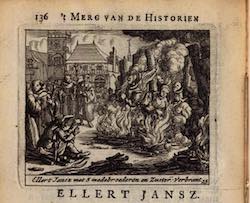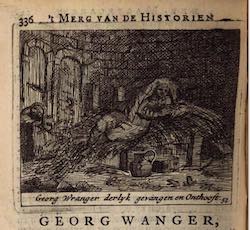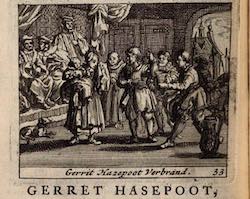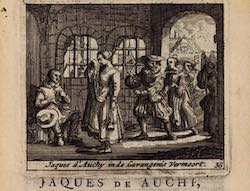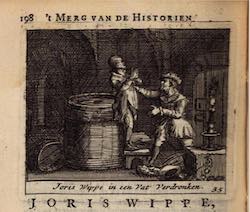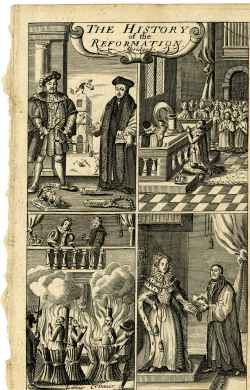Topic: 6. Sacrifices of self: Martyrology after Reformation (16th-18th Century)
During the volatile period between the sixteenth and eighteenth centuries, the concept of martyrdom underwent significant reinterpretations across different Christian denominations. This section explores how Catholics, Protestants, and Anabaptists each uniquely perceived and portrayed martyrdom. Protestants, countering the Catholic notion of sainthood, crafted new martyrologies to establish a lineage of sacrifice rooted in what they deemed as true faith. Similarly, the Anabaptists viewed the state of persecution, as chronicled in their martyrologies, as a testament to being part of the true church. This collection includes a wide array of early modern Catholic, Lutheran, Calvinist, and Anabaptist printed sources and images. It is further enriched by a comprehensive bibliography spanning from the 19th to the 21st Century, offering modern perspectives on these historical interpretations
The Confession of Richard Brandon the Hangman (Upon His Death Bed) Concerning His Beheading His Late Majesty, Charles the First, King of Great Britain; and His Protestation and Vow Touching the Same; the Manner how He Was Terrified in Conscience; the Apparitions and Visions Which Apeared Unto Him; the Great Judgement that Befell Him Three Dayes Before He Dy’d; and the Manner How He Was Carryed to White-Chappell Churchyard on Thursday Night Last, the Strange Actions That Happened Thereupon; With the Merry Conceits of the Crowne Cook and His Providing Mourning Cords for the Buriall
[London]: n.p., 1649.
P. Alexander Briant, Soc. Iesu Londini pro fide Catholca suspensus et sectus. j, Decemb, 1581. (1608)
from: Unknown
National Portrait Gallery, London
P. Robertus Southuell, Soc. Iesu Londini pro Cath. fide suspensus et sectus. 3. mar. 1595. (1608)
from: Unknown
National Portrait Gallery, London
Pio Cornelius Anglus Soc. Iesu novitius Dorcesta pro Catholica fide suspensus et sectus an. 1594. (18th Century)
from: Unknown
National Portrait Gallery, London
Amyntor, or, A Defence of Milton's Life Containing I. A General Apology for All Writings of That Kind. II. A Catalogue of Books Attributed in the Primitive Times to Jesus Christ, His Apostles and Other Eminent Persons: With Several Important Remarks and Observations Relating to the Canon of Scripture. III. A Complete History of the Book Entitul'd Icon Basilike, Proving Dr. Gauden and Not King Charles the First to Be the Author of It: With an Answer to All the Facts Alledg'd by Mr. Wagstaf to the Contrary; and to the Exceptions Made Against My Lord Anglesey's Memorandum, Dr. Walker's Book or Mrs. Gauden's Narrative, Which Last Piece Is Now the First Time Publish'd at Large
London: n.p., 1699.
12 Christenen te Deventer gevangen (1736)
from: Joost, B. 't merg van de historien de martelaren, Amsterdam, I. Tirion, 1736, p. 273
Bodleian Library, Oxford
Augustyn op een ladder gebonden en verbrant (1736)
from: Joost, B. 't merg van de historien de martelaren, Amsterdam, I. Tirion, 1736, p. 176
Bodleian Library, Oxford
Een Jongeling van 14 jaren met zyn 6 Broeders Onthoost (1736)
from: Joost, B. 't merg van de historien de martelaren, Amsterdam, I. Tirion, 1736, p. 107
Bodleian Library, Oxford
Ellert Jansz met 5 medebroederen en Zuster: Verbrandt (1736)
from: Joost, B. 't merg van de historien de martelaren, Amsterdam, I. Tirion, 1736, p. 136
Bodleian Library, Oxford
Georg Wranger derlyk gevangen Onthoost (1736)
from: Joost, B. 't merg van de historien de martelaren, Amsterdam, I. Tirion, 1736, p. 336
Bodleian Library, Oxford
Gerrit Hazepoot verbrand (1736)
from: Joost, B. 't merg van de historien de martelaren, Amsterdam, I. Tirion, 1736, p. 178
Bodleian Library, Oxford
Jaques d'Auchy in de Gevangenis Vermoort (1736)
from: Joost, B. 't merg van de historien de martelaren, Amsterdam, I. Tirion, 1736, p. 201
Bodleian Library, Oxford
Joris Wippe in een vat verdronken (1736)
from: Joost, B. 't merg van de historien de martelaren, Amsterdam, I. Tirion, 1736, p. 198
Bodleian Library, Oxford
bottom left, Cranmer, Bishop Nicholas Ridley, and Bishop Hugh Latimer burning at the stake, with Queen Mary I and a monk observing from a balcony above (1682)
from: Engraved title-page to Gilbert Burnet, 'The Abridgment of the History of the Reformation of the Church of England' (London, Richard Chiswell, 1682)
London, British Museum

